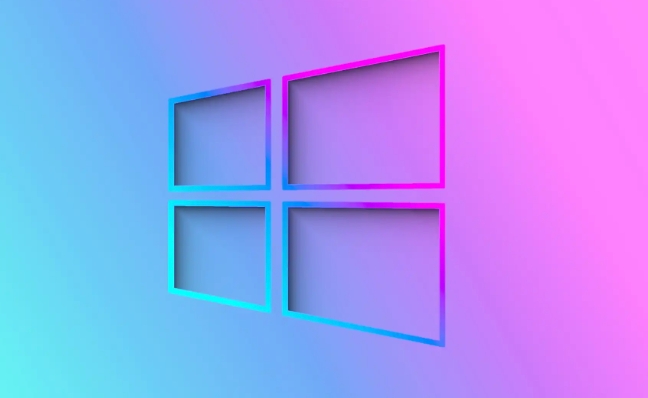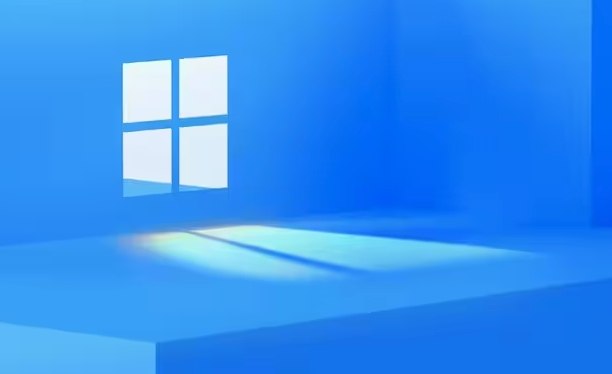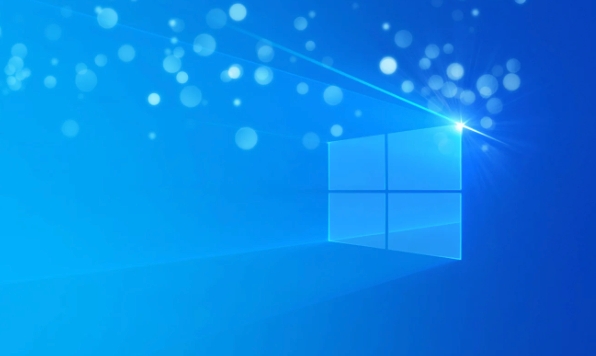The "Windows Stop Code: Critical Process Died" blue screen error is usually caused by an unexpected termination of critical system processes, and does not necessarily mean hardware corruption. Common reasons include system file corruption, driver incompatibility, third-party software conflicts, update failures, or hardware exceptions. 1. You can try to enter safe mode to uninstall the recently installed driver or software, or use system restore; 2. Run the sfc /scannow and DISM commands to repair system files; 3. Update or roll back the drivers, especially graphics card and motherboard drivers; 4. Use memory diagnostic tools and chkdsk to check the memory and hard disk status; if the problem persists, it is recommended to analyze the blue screen log, update the system, uninstall third-party antivirus software, or reset the system.

When encountering the blue screen error "Windows Stop Code: Critical Process Died", many people's first reaction is that there is a big problem with the system. In fact, it is not uncommon, and it does not necessarily mean that the hardware is broken, and it can be solved in most cases.

What is Critical Process Died?
This is a blue screen error triggered when a Windows system detects an unexpected termination of a critical system process during operation. Because these processes are crucial to system stability, once they crash, the system cannot continue to run and can only be forced to restart.

Common reasons include:
- System files are corrupt or lost
- Driver incompatible or error
- Third-party security software conflict
- Windows update failed or partially installed
- Hardware (such as memory, hard disk) abnormality
How to troubleshoot and repair?
1. Check the recently installed driver or software
If you have recently installed new drivers or third-party software (especially antivirus software, virtual machine tools, etc.), this error may be caused.

You can try:
- Enter safe mode to uninstall recently installed drivers or software
- Use System Restore to return to the previous normal point in time
It is recommended to enter the system operation from safe mode first, so as to avoid triggering the blue screen again.
2. Run the system file checking tool
System file corruption is also one of the common reasons. It can be fixed with built-in SFC and DISM tools:
sfc /scannow
If the above command does not solve the problem, try again:
DISM /Online /Cleanup-Image /RestoreHealth
These two commands will scan and repair the core system files. After completion, restart to see if the blue screen still appears.
3. Update or rollback the driver
Sometimes incompatibility with graphics cards, network cards or other hardware drivers can also cause this problem.
Operation suggestions:
- Open Device Manager and find the recently updated driver
- Right-click to select "Update Driver" or "Rolleate Driver"
- Pay special attention to graphics card drivers (NVIDIA, AMD, Intel) and motherboard drivers
4. Check the memory and hard disk status
Although not the most common reason, it cannot be ignored.
you can:
- Check memory using Windows Memory Diagnostic Tool
- Run
chkdsk /f /rat the command prompt to check for disk errors
If you suspect it is a hard drive problem, you can use CrystalDiskInfo to view the health status of the hard drive.
What should I do if I encounter frequent blue screens?
If this error occurs repeatedly, consider the following steps:
- View the Blue Screen Log: Use "Event Viewer" or BlueScreenView to analyze the specific crash time and module name
- Update Windows system to the latest version
- Uninstall all third-party antivirus software (including trial version)
- If the reason is not found, try resetting or reinstalling the system
Basically these are the methods. In most cases, the above steps can be used to locate the problem. Although this error seems scary, it is not complicated to handle and is just easy to ignore details.
The above is the detailed content of Windows stop code critical process died. For more information, please follow other related articles on the PHP Chinese website!

Hot AI Tools

Undress AI Tool
Undress images for free

Undresser.AI Undress
AI-powered app for creating realistic nude photos

AI Clothes Remover
Online AI tool for removing clothes from photos.

Clothoff.io
AI clothes remover

Video Face Swap
Swap faces in any video effortlessly with our completely free AI face swap tool!

Hot Article

Hot Tools

Notepad++7.3.1
Easy-to-use and free code editor

SublimeText3 Chinese version
Chinese version, very easy to use

Zend Studio 13.0.1
Powerful PHP integrated development environment

Dreamweaver CS6
Visual web development tools

SublimeText3 Mac version
God-level code editing software (SublimeText3)
 How to change the system display language for all users in Windows
Jul 31, 2025 am 08:18 AM
How to change the system display language for all users in Windows
Jul 31, 2025 am 08:18 AM
InstallthedesiredlanguagepackviaSettings→Time&Language→Language®ion,ensuring"SetasmyWindowsdisplaylanguage"isselected.2.Changethesystemdisplaylanguageinthesamemenuandrestart.3.OpenControlPanel→Region→Administrativetab,click"
 How to reset the Microsoft Store in Windows
Jul 31, 2025 am 08:23 AM
How to reset the Microsoft Store in Windows
Jul 31, 2025 am 08:23 AM
ResettheMicrosoftStoreviaSettingsbygoingtoApps>Installedapps,selectingMicrosoftStore,clickingAdvancedoptions,thenRepairandResetifneeded.2.Ifthatfails,re-registertheStoreusingPowerShellasadminwiththecommand:Get-AppXPackage-NameMicrosoft.WindowsStor
 How to reset the TCP/IP stack in Windows
Aug 02, 2025 pm 01:25 PM
How to reset the TCP/IP stack in Windows
Aug 02, 2025 pm 01:25 PM
ToresolvenetworkconnectivityissuesinWindows,resettheTCP/IPstackbyfirstopeningCommandPromptasAdministrator,thenrunningthecommandnetshintipreset,andfinallyrestartingyourcomputertoapplychanges;ifissuespersist,optionallyrunnetshwinsockresetandrebootagain
 How to install Windows on a Mac without Boot Camp
Jul 31, 2025 am 11:58 AM
How to install Windows on a Mac without Boot Camp
Jul 31, 2025 am 11:58 AM
Without BootCamp, installing Windows on Mac is feasible and works for different chips and needs. 1. First check compatibility: The M1/M2 chip Mac cannot use BootCamp, it is recommended to use virtualization tools; the Intel chip Mac can manually create a boot USB disk and install it in partition. 2. Recommended to use virtual machines (VMs) for M1 and above chip users: Windows ISO files, virtualization software (such as ParallelsDesktop or UTM), at least 64GB of free space, and reasonably allocate resources. 3. IntelMac users can manually install it by booting the USB drive: USB drive, WindowsISO, DiskU is required
 A guide to custom Windows installation options
Aug 01, 2025 am 04:48 AM
A guide to custom Windows installation options
Aug 01, 2025 am 04:48 AM
Choose"Custom:InstallWindowsonly(advanced)"forfullcontrol,asitallowsacleaninstallthatremovesoldissuesandoptimizesperformance.2.Duringsetup,managepartitionsbydeletingoldones(afterbackingupdata),creatingnewpartitions,formatting(usingNTFS),ors
 Step-by-step guide to installing Windows from an ISO file
Aug 01, 2025 am 01:10 AM
Step-by-step guide to installing Windows from an ISO file
Aug 01, 2025 am 01:10 AM
DownloadtheWindowsISOfromMicrosoft’sofficialsite.2.CreateabootableUSBusingMediaCreationToolorRufuswithaUSBdriveofatleast8GB.3.BootfromtheUSBbyaccessingthebootmenuoradjustingBIOS/UEFIsettings.4.InstallWindowsbyselectingcustominstallation,choosingtheco
 How to manage AppLocker policies in Windows
Aug 02, 2025 am 12:13 AM
How to manage AppLocker policies in Windows
Aug 02, 2025 am 12:13 AM
EnableAppLockerviaGroupPolicybyopeninggpedit.msc,navigatingtoApplicationControlPolicies,creatingdefaultrules,andconfiguringruletypes;2.Createcustomrulesusingpublisher,path,orhashconditions,preferringpublisherrulesforsecurityandflexibility;3.Testrules
 How to install Windows on a Mac
Jul 31, 2025 am 10:07 AM
How to install Windows on a Mac
Jul 31, 2025 am 10:07 AM
ForIntel-basedMacs,useBootCampAssistanttocreateadual-bootsystemwithWindowsbypreparingaUSBdrive,downloadingaWindowsISO,partitioningthedisk,andinstallingWindowsalongsidemacOSwithsupportdrivers.2.ForAppleSiliconMacs(M1/M2/M3),usevirtualizationsoftwareli






